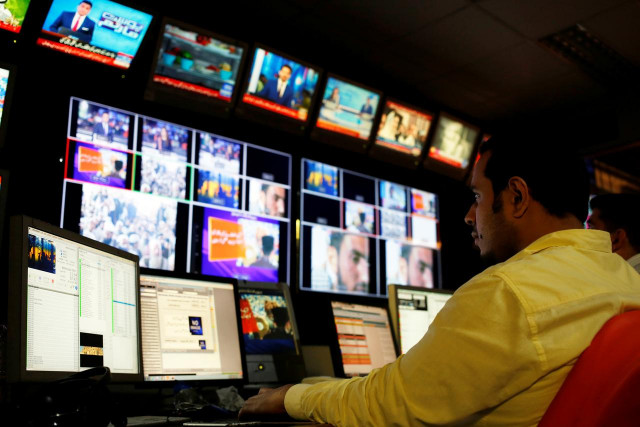Perceptions, people and politics: the changing face of Muslims in cinema
Art without favourable politics cannot penetrate far, says Bushra Ansari

Representational image. PHOTO: REUTERS
A gripping session focused on ‘The Changing Face of Muslims in Urdu and Hindu Cinema’ witnessed an enthralled houseful audience tossing questions to panellists including influencers from various walks of life.
The panel - moderated by prominent Pakistani intellectual Javed Jabbar - comprised Bushra Ansari, a veteran actress famous for her craft and witty sense of humour, Sultan Arshad (labelled a ‘walking talking encyclopaedia in cinema’ by Jabbar), film critic and analyst Khusro Mumtaz as well as Nadya Chishti, who is also an author and a book critic.
Referring to old classics like Dost, Zeenat and Bhai Jaan, Arshad elucidated on the beginning of Muslims in cinema and how they took over industry in the nick of time due to their flair in films. Talking about the portrayal of Muslim characters as protagonists in most of the films in the 1970s, he said that the political atmosphere around the world has played an eminent role in the representation of Muslims on the big screen.
“The transition can be seen clearly along the years. With the emergence of Pakistan in 1947, the characters have switched sides in 1965 - during first Indo-Pak war, 1971 - when East Pakistan was separated - to 1998 when Pakistan arose as the ‘nuclear power,’” Arshad said, adding that cinema can never stand apart from politics.
Lamenting that Pakistan did not provide adequate opportunities to minorities for prospering in cinema business, Bushra Ansari said that Indian cinema, unlike Pakistan, had shown generosity for Muslims, at least until the Modi regime spewed hatred and bias among the masses.
“Did we produce any Shahrukh Khan?” she asked.
However, Jabbar disagreed with these comments, saying that the nature of the subcontinent itself was quite inclusive. “According to research by an Islamic university on the portrayal of Muslims in Bollywood during the period of 2009-13, about 32 per cent of characters were shown neutral with 25 per cent in positive roles, whereas 43 per cent appeared as villains,” he quoted.
Highlighting the interest of Western students in studying Muslim culture and its depiction in cinema, Chishti also commented on the power of words that holds the world together under the expression of art.
While speaking on the expression of art, Mumtaz underlined the limitation of the one-sided representation of Muslim lifestyle, inspired mostly by Lucknowi culture in South Asian cinema.
“Until India’s Gully Boy recently, I have seen every Muslim character greeting others with ‘Adab’ in Indian films, although we stopped the practice long ago,” he added.
In the light of recent censorship imposed on Sarmad Khoosat’s Zindagi Tamasha, Ansari said that fear, fury and frustration cannot produce quality art in Pakistan. “Art cannot blossom under such strict surveillance by the censorship board,” she said, adding that it could not go far if the politics surrounding it did not support the narrative.
Concluding the session, Jabbar also called attention to the content of films along with the three Ps - perceptions, people and politics - impacting the future and outreach of cinema around the globe.



















COMMENTS
Comments are moderated and generally will be posted if they are on-topic and not abusive.
For more information, please see our Comments FAQ